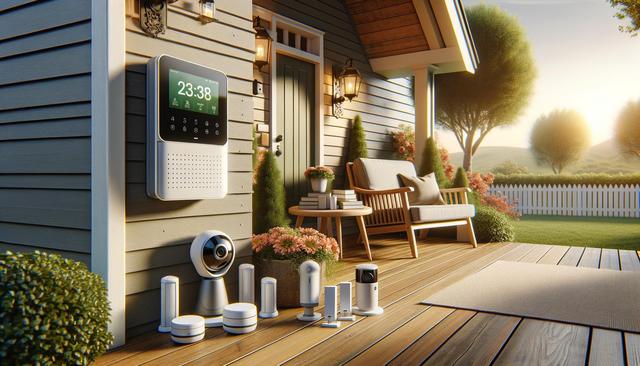
A Practical Guide to Home Security Systems
Understanding the Basics of Home Security Systems
Home security systems are designed to safeguard your property, valuables, and loved ones from potential threats such as burglary, fire, and unauthorized entry. These systems typically include a combination of hardware components like sensors, cameras, alarms, and control panels, along with software that enables monitoring and alerts. Modern systems offer both wired and wireless setups, giving homeowners flexibility in installation and usage. Many setups also integrate with mobile apps, allowing for easy remote control and real-time notifications.
When choosing a system, it’s important to understand the different types available:
- Monitored systems, which connect to a professional monitoring service
- Unmonitored systems, which rely on you or nearby individuals to respond to alarms
- Wireless systems, offering easy installation and portability
- Wired systems, often more reliable but requiring professional installation
Each type has its benefits and potential limitations. Your choice will depend on your specific needs, such as the size of your home, your budget, and whether you prefer a do-it-yourself approach or professional support.
Key Components of an Effective Security Setup
An effective home security system includes multiple layers of protection, combining different devices and technologies to cover various entry points and scenarios. Some of the most common components include:
- Door and window sensors that alert you when opened unexpectedly
- Motion detectors for detecting movement inside or around your home
- Surveillance cameras for real-time video monitoring and recording
- Smart locks that allow you to control access remotely
- Alarm systems with loud sirens to deter intruders
These components work together to create a comprehensive security net. Many systems also feature environmental monitoring tools like smoke detectors, carbon monoxide sensors, and flood sensors, providing all-around protection. Integration with smart home platforms allows for automation and control using voice commands or mobile apps, enhancing both convenience and safety.
Benefits of Installing a Home Security System
Installing a home security system offers a variety of advantages beyond just deterring crime. First and foremost, it provides peace of mind. Knowing that your home is protected whether you’re at work, on vacation, or asleep can significantly reduce stress. In addition to preventing break-ins, many systems help in early detection of fires and gas leaks, potentially saving lives and property.
Some notable benefits include:
- Remote access to your home via mobile apps
- Insurance discounts as many providers offer reduced premiums for secured homes
- Real-time alerts that keep you informed of any unusual activity
- Increased property value, as security features are attractive to buyers
Moreover, visible security equipment such as cameras and yard signs can act as deterrents to potential intruders. The psychological impact of knowing a property is monitored often discourages unlawful attempts.
Choosing the Right System for Your Needs
Selecting the right home security system involves evaluating your specific requirements and doing some research. Start by assessing your property—consider the number of entry points, the size of your home, and any existing security measures. If you live in a high-traffic area or travel frequently, a system with professional monitoring might be more suitable. On the other hand, tech-savvy homeowners might prefer a self-monitored system with app integration.
Here are some tips to help in your decision-making process:
- Determine your budget and stick to it
- Prioritize must-have features like camera quality or smart lock capabilities
- Check for compatibility with existing smart home devices
- Read user reviews and look for customer service ratings
- Decide between DIY installation and professional setup
It’s also a good idea to test the system after installation to ensure everything works as intended. Regular maintenance and updates are essential to keep your system functioning optimally.
Maintaining and Upgrading Your Security System
Once your home security system is in place, ongoing maintenance is key to ensuring its long-term effectiveness. This includes checking batteries in sensors and alarms, cleaning camera lenses, and updating firmware regularly. It’s also wise to periodically test all components to confirm they are operational. Many systems provide diagnostic tools or mobile alerts when maintenance is required.
As technology evolves, so do security threats. Upgrading your system periodically ensures that you’re protected against new vulnerabilities. Look for updates or add-ons that improve functionality, such as:
- Enhanced video quality for clearer footage
- Improved motion detection with AI-based filtering
- Two-way audio for better communication through security cameras
- Expanded integration with other smart home devices
Keeping an eye on industry trends can help you stay ahead of potential risks and take advantage of improved features. Subscribing to updates from your security provider or following trusted home tech resources is a good way to stay informed.


